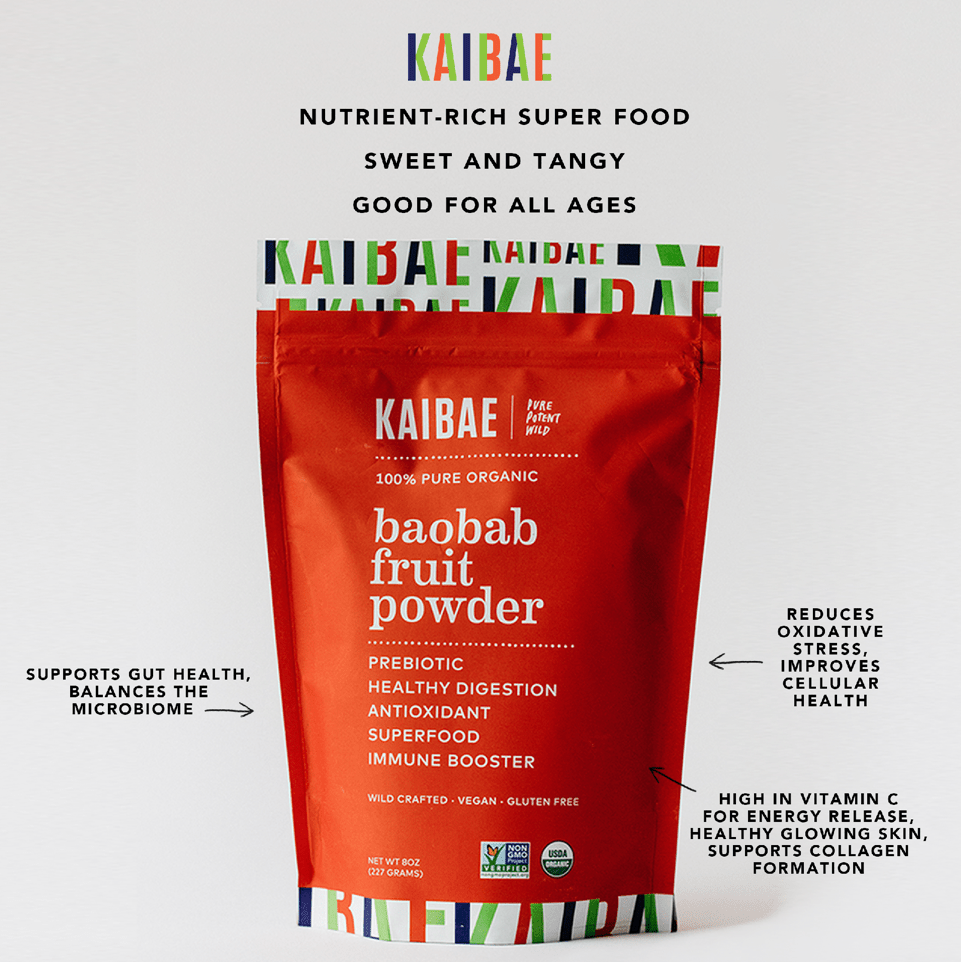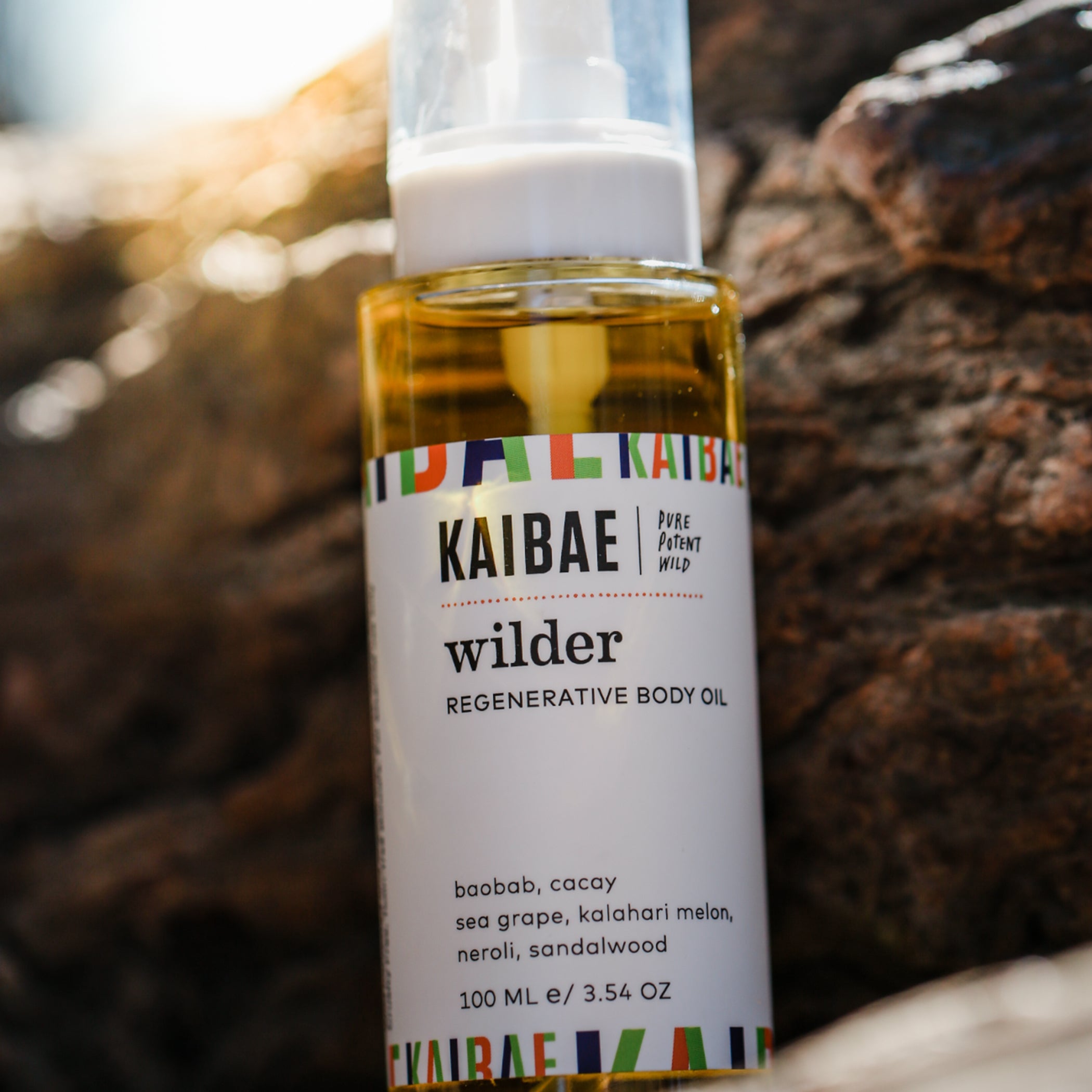Rewilding in the Fashion Industry

Climate change and the rapid depletion of our natural resources are now very much at the forefront of people's minds. Therefore, consumers are willing to make better choices regarding the items they buy. The demand for on-trend yet affordable clothing is enormous, but it comes at a larger price than what you pay at the cash register. It's no secret that "fast fashion" is detrimental to the environment, from contributing to greenhouse gas emissions to creating vast amounts of waste destined for landfills.
If we want to solve this problem, we have to change how we shop for clothes. Making ethical and sustainable clothing choices is the only way forward. The eco-fashion industry has decided to take matters into its own hands and is making an impact with something called "rewilding."
What is rewilding, and how is it applied to the fashion industry? Read on to discover all about it and why you should choose it.
How is the Fashion Industry Impacting the Environment?
Our insatiable appetite for cheap, fashionable clothing has a devastating impact. People buy more but keep them for less time, meaning most of the dress ends up in a landfill. A whopping 85% of all textiles end up in the dump. In 2018, an incredible 17 million tons of materials were destined for garbage.
60% of all textiles are plastic-based (polyester etc.), which shed microfibers. This ultimately produces the equivalent of 50 billion plastic bottles of microplastics that pollute our oceans.
The manufacturing of clothing creates a massive problem, too. Ninety-three billion cubic meters of water are needed yearly to produce all clothing. If that wasn't enough, the fast fashion industry contributes hugely toward climate change. It is responsible for 8-10% of carbon emissions each year from the manufacturing and distribution processes.
What is the Negative Impact of Fashion?
In light of the above, it's not hard to see how fast fashion negatively impacts the world around us. The traditional fashion industry also devastates local communities. It depletes the natural resources required by the people there and creates pollution. Those who work in the factories often work incredibly long hours in dangerous conditions for very little pay.
This is the actual price of cheap clothing. Easy on the wallet, devastating to the planet.
What is the Definition of Rewilding?
Fortunately, ethically minded people are striving to create a sustainable fashion industry amidst all this destruction. One such method is by rewilding.
Rewilding essentially gives things over to nature by letting plants and animals care for themselves. This is achieved by enabling natural processes to take place undisturbed. The goal is to restore the ecosystems to their former glory and restore landscapes that farming practices have degraded.
Rewilding allows a return to the natural rhythms of nature and creates biodiverse habitats for all life to thrive in. The practice can be applied to all land, sea, and oceans.

How Can Rewilding Help Reduce Environmental Impact?
Industrial farming practices can severely deplete the ecosystem and biodiversity. Manufacturing and mining create waste that pollutes the landscape and waterways.
Rewilding can help reverse this damage by allowing the area to recover and heal. Reintroducing native flora and fauna gives the room the kick-start to flourish. Ceasing human activity there will stop it from becoming further damaged.
Once the area starts recovering, the emerging ecosystem will restore balance, regulate the environment, and increase carbon absorption, thus fighting climate change.
How is Rewilding Used in the Fashion Industry?
Ecological clothing is created using organically grown natural materials. The manufacturers use processes that require fewer resources, including less water. The result is solid and durable clothing. Ethical dress brands also don't design clothes that jump on trends. Instead, they focus on timeless pieces that can be worn for decades without going out of style.
Through the use of eco-friendly and sustainable resources, there is far less environmental damage. Because the clothes are designed to last long-term, it significantly reduces the amount of waste going to landfills.
These sustainable practices allow the land and the oceans to recover and prevent further plastic and pollutants from entering the ecosystem. As consumers, choosing to buy eco-friendly products will enable us to contribute to the rewilding of our surroundings.

How Does Fashion Integrate the Rewilding Approach?
Ethical and eco-friendly fashion incorporates rewilding by moving away from fast and disposable clothing items. Pieces made from natural, organic materials are high-quality and durable, which means they'll last a long time. The designs are also considered timeless, so they won't ever fall out of fashion.
They are considering the environment where the materials are cultivated, and sourcing materials from pesticide-free and gently farmed lands allow more areas to become rewilded.
How Do Sustainable Designers use Rewilding Techniques?
As noted above, using natural and organic materials is critical. Many designers are also repurposing existing textiles, which reduces or eliminates the need to source new raw materials. Designers will know each step of the supply chain so they can be sure that it’s 100% ethically produced.
What Are Examples of Environmentally Conscious Brands?
Thankfully, you are spoiled for choice regarding brands that put the environment first.
- Pact: Their responsibly sourced cotton uses over 80% less water to produce than non-organic practices.
- Vetta: Focuses on the "less is more" mantra with capsule wardrobes and multi-purpose clothing made from upcycled materials.
- For days: A zero-waste philosophy using recyclable textiles, you can return your apparel, which will then be used to create new pieces.
- Backbeat Co: Ethically sourced and organic, low-impact textiles shipped in plastic-free, compostable packaging.
- Chloe: B Corporation with a goal for 2025 to use 90% lower impact materials across all collections.
- Patagonia: B Corporation has always prioritized its impact on the planet.

Examples of Successful Rewilded Fashion Collections
In March 2022, fashion powerhouse Chloe incorporated rewilding into their Fall/Winter 2022 collection. Set in a greenhouse, the show featured stripped-down, simple tailored pieces created using an earthy palette. The words “landscape catastrophes” versus “landscape successes” were hand-painted onto accessories, the sales of which will help indigenous women in the Amazon.
What Are the Current Challenges of Wilding in the Fashion Industry?
Ethical fashion is constantly doing battle with its fast-fashion counterparts. Unfortunately, the demand for fast fashion is so great that clothing brands such as Shein are now dubbed "ultra-fast fashion" due to their ability to churn out new looks in less than ten days.
Shein is so popular it’s now a multi-billion dollar brand. Its cheap clothing is bought and shipped worldwide. Its impact on the environment is devastating. The brand encourages single-use, meaning that an individual purchases an item, wears it once, then puts it in the garbage.
Getting consumers to shift away from instant, low-cost gratification is tough. People are reluctant to spend more on quality, long-lasting pieces. This is what ethical fashion needs to overcome.
What Needs to Happen for Rewilding to Become Mainstream?
There needs to be more of a push to expose the damage fast-fashion brands cause. A fast-fashion brand's sustainability is close to zero, which needs to become common knowledge. Education is key. A strong focus on preserving nature for future generations must become the primary consideration when people buy clothes.
Ten years ago, no one gave much thought to climate change or plastic pollution. Thanks to campaigns and scientifically backed statistics and information, it's now impossible to ignore. If we can demonstrate how much fast fashion contributes to these issues, consumers will start to make better choices.
What Is the Future of Rewilding in Fashion?
As consumer demand for sustainable clothing grows, you can expect to see more independent fashion brands focusing on ethical and sustainable clothing. Large brands such as H&M and Zara will be extremely keen not to lose business to smaller brands. This shift in focus will force big companies to change their practices and adopt a more ethical approach.
We must change our shopping habits if we're serious about climate change. As the climate worsens, consumers will be more willing to adjust their shopping.

How to Bring Rewilding into Your Style
You can incorporate rewilding into your style by choosing to wear natural materials. Stop buying anything that is created from synthetic fabrics.
Try to reduce how many new items you buy. Ask yourself if you "need" it or "want" it before you make the purchase. Instead, get creative with your existing wardrobe. You can repurpose older clothing items and bring them up to date by adding embellishments and accessories. You can redesign pieces to suit the season if you're good with a sewing machine.
How to Shop for Eco-Friendly Fashion?
- Research slow fashion brands that suit your style
- Try to buy from local businesses or ones that are at least based in your state to reduce shipping emissions.
- Never choose synthetic fabrics.
- Always opt for sustainably grown and sourced natural materials.
- Consider buying second-hand and preloved items.
- Get your friends together and hold a swap- shop where you exchange clothing; you can get a whole new wardrobe for free.
How Can We Reintroduce Natural Materials Into Our Wardrobes?
Whenever you buy anything new, ensure it’s made from natural materials. Check the label before you buy, and refuse anything synthetic or anything that has been blended with something artificial. Gradually, your wardrobe will comprise natural materials rather than synthetics.
How You Can Get Involved in Rewilding Your Clothes
By adopting a sustainable style, you will already be working towards a rewilding ethos. When you are done using the items like clothing, you can repurpose them (cleaning rags, etc.), or you can compost them and honestly give them back to nature.
How to Find Reclaimed Materials for Fashion
You can find textiles in a multitude of places. Thrift stores are a treasure trove for finding the right kind of fabric or clothing item to repurpose. Even bed linen, tablecloths, and other large household fabrics can be reused and transformed into beautiful clothing.
Overall Benefits of Rewilding for Mind, Body, and Spirit
By choosing clothing made from sustainable fashion, you can have a clear conscience knowing you are making strides toward a better future. Placing natural fibers next to your skin is far healthier than synthetic versions as they allow your skin to breathe and don't contain any chemical nasties.
How Can Wilding be Used in the Wellness Industry?
Sustainable and ethical brands don't stop with fashion. In almost any industry, there are always better options. In the wellness industry, you can opt for organic, vegan, and ethically sourced products. The KAIBAE Wellness brand based in California takes rewilding a step further with their direct sourcing practices for Baobab and wild plants in Africa preserving biodiversity. KAIBAE health and beauty products capture the benefits of these powerful wild plants to Rewild Your Microbiome from gut to skin undoing the negative impacts of pollution and our modern lifestyle.
How Can Individuals Use Rewilding to Improve Their Own Wellness?
Organic and natural options are always healthier and better for you than less-responsibly sourced or synthetic products. For example, KAIBAE harnesses the natural power of plants to create products to aid gut health. They are always from sustainable and responsible sources.

Tips for Making Rewilding a Part of Your Daily Routine
- Before you buy anything new, ensure you’re buying from an ethical brand.
- Before you throw anything away, determine if you can repurpose or reuse it.
- Consider buying preloved or second hand before you buy new.
- Recycle as much as possible.
- Avoid plastic and synthetic items.
Let’s all work together to say “no” to fast fashion and “yes” to sustainable and ethical clothing that helps rewild our world.















